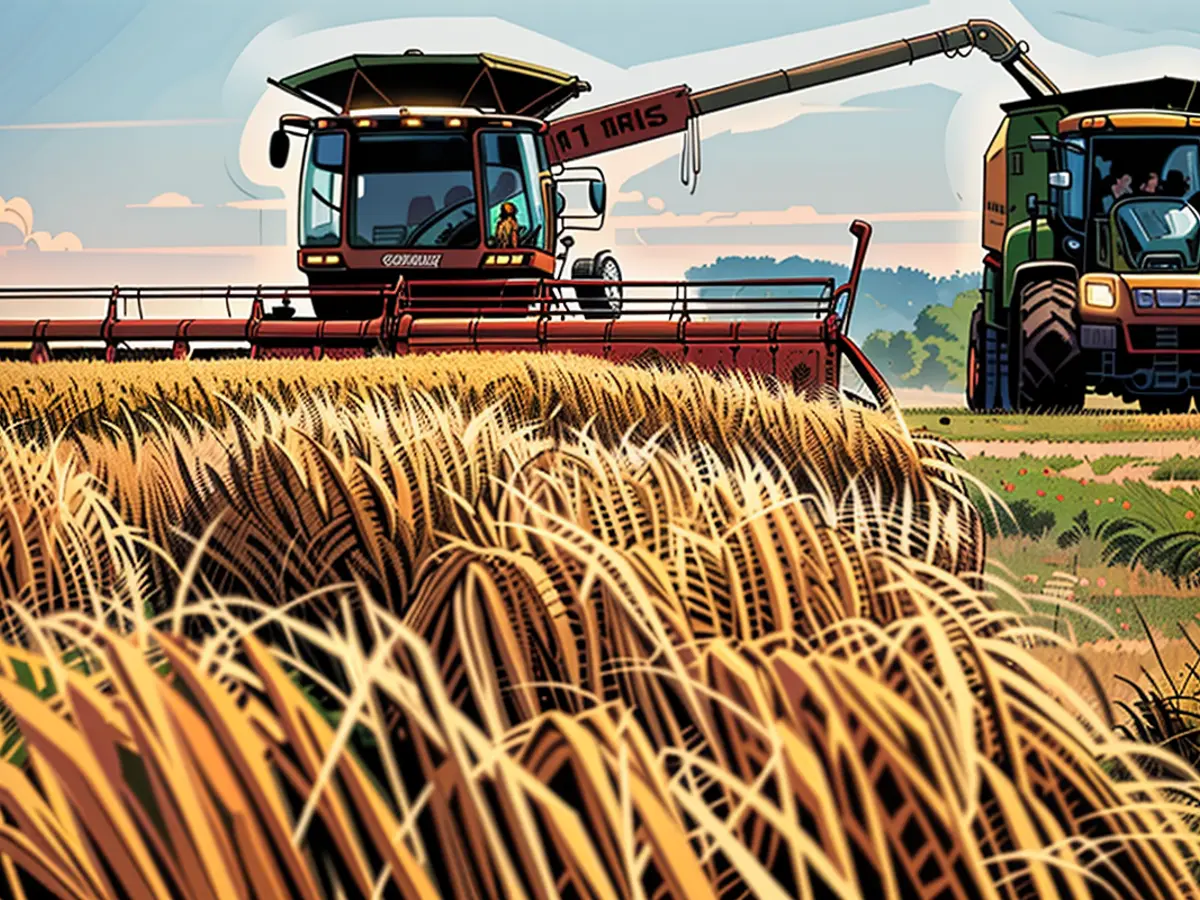In Buttstädt, Thuringia's Sömmerda district, the Agricultural Association delivered some not-so-cheerful news on a Thursday – a 9% drop in wheat yield compared to the average from previous years. The preliminary estimate suggested a potential 2.2 million tons of grains, a substantial decrease from usual harvests.
The Thuringia farmers began their cereal harvest in late July, but a heavy dose of rainfall towards the end of the month had a discouraging effect on the unharvested fields. Klaus Wagner, the President of Thuringia's Agricultural Association, shared his thoughts, stating that the impacted wheat was no longer suitable for baking.
Cultivating cereals occupied approximately 328,500 hectares of land in Thuringia. Winter wheat, which covers an area of 167,900 hectares, takes the lead as the most cultivated crop in the state. Despite an early harvest due to favorable weather conditions, the late July rainfall caused trouble, making the harvesting process challenging.
As a result, the damaged wheat could not serve its primary purpose as baking ingredients. Instead, alternative uses had to be found for the grain.
Further Readings:
Additional Insights:
- Dry-hot wind stress may impact wheat grain yields and quality.
- The use of appropriate fertilization practices is essential, as mineral and organic fertilizer applications can affect crop yields and nitrogen uptake.
- Availability of nutrients like nitrogen, phosphorus, and potassium is crucial for optimum plant growth.
- Environmental factors such as drought, extreme temperatures, and soil moisture levels can have significant effects on grain harvest yields and quality.








